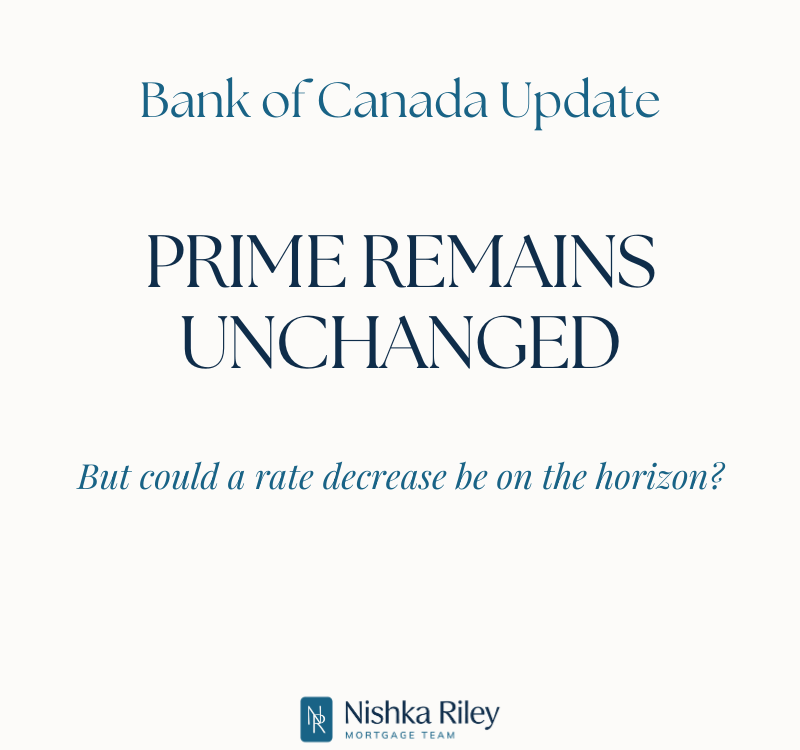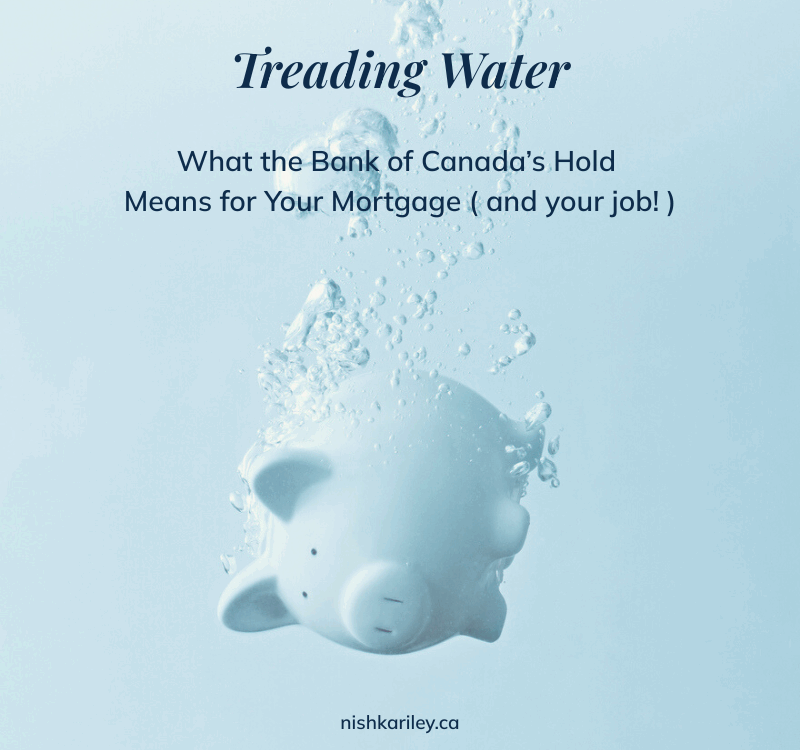
Rate Update – Perception Vs Reality
March 16, 2021
Rate Update – All Quite on the Western Front
June 9, 2021The prime lending rate was left unchanged today, however, the bond buyback program was trimmed back to $3 billion per week, a sign that the recovery is on the horizon.
The key takeaway from Governor Tiff Macklem cautiously optimistic press statement is that he will be keeping the money taps open until he gets full confirmation that the economy is back on track. It seems that the Governor is firmly aware that history favours those who are generous with money vs stingy…it’s the reason The Christmas Carol is a classic.
So if the Governor is going to be throwing money around like a new musician signed to a big label, what does that mean for mortgage rates? Scroll on down to find out more …
Key Points From The Bank of Canada Announcement
- Prime remains unchanged
- Bond yields ease off due to a clearer picture on inflation
- Economic slack is “the” indicator to watch – not employment
- Global economy growing = rising oil prices = happy Albertans
How Your Mortgage Is Impacted
- Bond Yields have levelled off
- Fixed and Variable mortgages are at a crossroads
- Rate holds available until just past BC day!
The Bond Market Says No
With pull back on the bond buyback program, the BOC is hoping the economy is finding its footing and requires less and less fiscal support. The balancing act for Tiff is to make sure he gets the economy on solid ground without stirring up an inflationary hornet’s nest. The fact that we are hearing a BOC governor and a Fed Chairman talk about going to 3% inflation at the end of 2022 with the hope of tapering back to 2% in 2023 is significant. Since the late 90s 2% inflation has been the ceiling. This is why we have seen bond yields rise so quickly as shown in the chart below, but the fact that they have tapered off and come back to the first peak after their initial rise suggests the bond market feels a full recovery is not very likely any time soon.

The Sign Post to Watch and The One to Not
Over the coming weeks and months, the headlines will be filled with talk about improving employment numbers which will ultimately give way to inflation. As you know from my previous posts, rising inflation and rising mortgage rates go hand in hand. With the amount of fiscal stimulus being placed in the markets by all levels of government, we are getting more and more calls regarding inflation concerns. To put your fears at ease I’ll cut to the chase – job growth does not necessarily correlate with inflation.
If you look back to 2018/2019 we had record employment levels, the likes we have never seen. Where was inflation? Nowhere to be seen! Why? Because capacity utilization and wage growth are the key drivers.
What’s capacity utilization you ask? Simply put, think of it as a company’s workload or ability to produce more of its product. If a company wants/needs to sell more of its product it really only has one of two ways, hire more workers or innovate. When you expand the concept across the country you can actually measure the potential capacity of Canada’s workforce to produce. Right now our capacity utilization is really, really low.
Capacity utilization however is not really an inflation indicator on its own, it’s more of a canary in the coal mine. Wage growth is the real number that says inflation is on its way. The reason is if a company is running at full capacity and wants to increase its sales/profits the path of least resistance is to go steal workers from its rival, usually by offering a higher wage. The opposite is also true. If a company wants to retain their key employees they need to compensate them so they won’t be poached by rivals. The good news/bad news is that innovation has kept capacity utilization low, which has kept wage growth low ( that’s the bad news ).
What’s the easiest way to track capacity and wage growth? Talk to your friends, family and neighbours. If you are hearing about non stop hiring, co-workers getting raises or being approached by other companies, then inflation is on the horizon. The caveat is that this method is very generalized and should exclude a few sectors. If you have a friend working in the Vancouver Tech industry you’ll quickly understand how employee demand is sending wages up in that industry as the big companies set up shop in Canada. Having said that there aren’t enough tech jobs to skew the inflation figures.
My personal observation after being in this role for over 20 years and funding over 4000 mortgages which means I’ve probably looked at close to 10,000 paystubs and employment letters. Aside from the tech sector, wages aren’t growing at a rate that is outside of 2%. I would actually argue we are getting paid less than our parents/grandparents were given how we are always on and plugged in thanks to technology. So with lots of excess capacity utilization in the system wage growth shouldn’t be an issue, which means neither should inflation.
Bottom Line:
So what do I think life will look like when you are reading the June version of this post?
- I expect that the housing market will have shrugged off the revised Stress Test and continue its climb but at a slightly more rational pace.
- Condos will step into the spotlight. Specifically 1 bedroom and 1 bedroom and den. In North Vancouver, the Shipyards District should be a hotspot given its proximity to transit, convenience and outdoor piazza feel.
- Rates will be range bound and the spring specials will be in full bloom.
- I will be in my Airstream, writing this post while overlooking a sparkling body of water with a coffee to my left and my pooch cuddled into me on my right.
If you got down this far, thanks for tuning in. I hope this post gave you some tools to put the current economic situation in perspective.
Take care, stay safe, and remember this too shall pass.
Did you Like this post? Then you’ll Like my Facebook Page. It’s filled with current news on what’s going on in the world of real estate.





